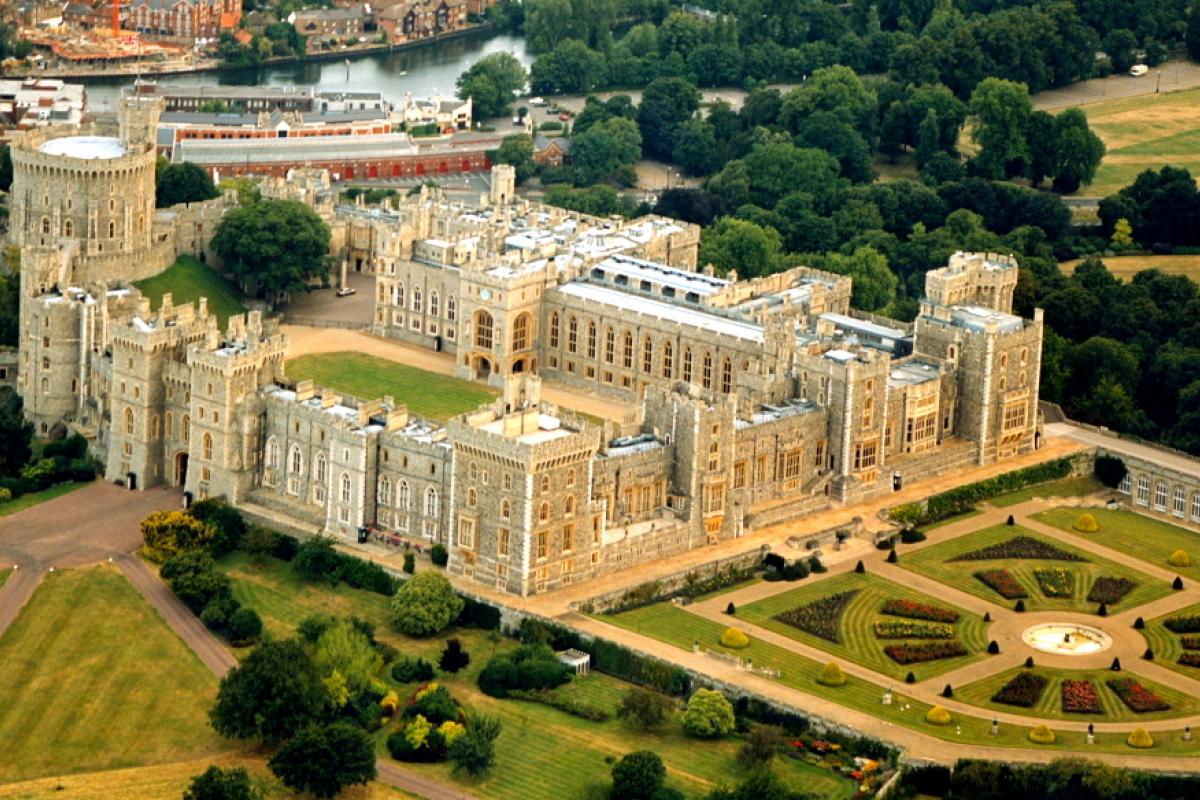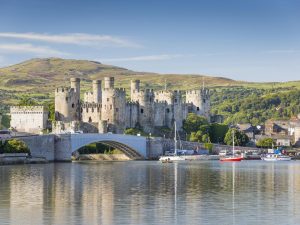Where can a queen of a country as large as Great Britain reside? Naturally, in the most beautiful and enormous castle. In England, it is Windsor Castle, which, by the way, is also considered to be the most beautiful castle in the world as a whole.
The history of Windsor Castle
Windsor Castle has a long history as a royal residence. The castle dates back to the reign of William the Conqueror. The site on which Windsor Castle stands was not chosen by chance, but was of strategic importance.
The wooden post, built on an artificial mound, was to serve as a lookout point for the roads leading to London. If an army advanced on the city, the soldiers would have had time to warn of the incursion.
Sadly, the Norman fortress of William I’s time has been completely destroyed; only the Watchtower, which stands in the centre of Windsor Castle, retains its almost 1,000-year-old foundations.
For many years Windsor Fortress was virtually undeveloped. It served as an observation post and temporary home for British monarchs on hunting trips. It was only in the mid-14th century that Edward III decided to rebuild the fortress on a grand scale. Many of the wooden buildings were destroyed and stone fortifications were built in their place.
The famous Round Tower appeared in those early days, and survives to this day. Since then, the castle has emerged from its period of stagnation and expanded. During the reigns of Edward IV and Henry VIII a church was built which became the tomb of many British monarchs. St George’s Chapel houses the ashes of Henry VIII, Queen Mary, Charles I and many others.
The castle was seized by Oliver Cromwell in 1648 and served for a time as his headquarters until the monarchy’s power was restored.
After the accession of Charles II to the throne, Windsor Castle began to develop at great speed. In 1666, the restoration of the old buildings and the creation of beautiful gardens were ordered. The Palace of Versailles was used as an example for the new look of the castle. After his death, the chateau was forgotten until 1820.
George IV decided to restore the palace, and it was during his reign that Windsor Castle acquired its luxury and splendour, combining neo-Gothic and Romanesque styles.
Windsor Castle today
In 1992, the castle suffered a catastrophic fire that completely destroyed dozens of rooms and damaged hundreds more. It was only by sheer luck that no one was killed. The severe damage to the palace and the lack of insurance led to an unexpected benefit for tourists: to pay for the repairs, access to Buckingham Palace was opened up. The painstaking renovation cost £40 million and restored the palace interiors to their former beauty.
Nor has the development of the palace stopped these days: under Elizabeth II, a beautiful Jubilee Garden was created to celebrate her golden jubilee. Subsequent monarchs also left their mark on the ancient monument. During its lifetime, the castle has witnessed 39 rulers.
More than a million tourists visit Windsor Castle each year and the residence is still used for official functions. You may know the palace from the recent lavish wedding of Prince Harry and Meghan Markle on 19 May 2018.
You may also like:


